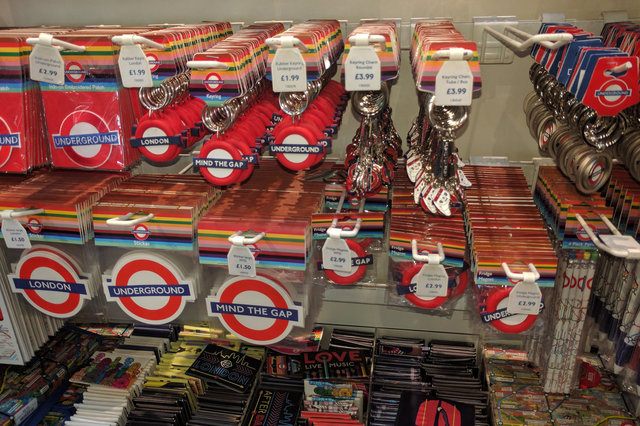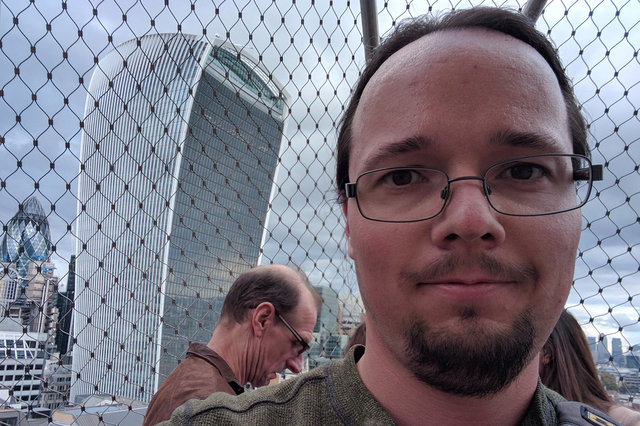Playing tourist in London
Started: 2016-11-20 14:40:17
Submitted: 2016-11-20 17:39:58
Visibility: World-readable
22nd October 2016: In which the intrepid narrator visits London after spending a week at his employer's office
After a week working in London, I had the weekend to play tourist before heading home. My first order of business on Saturday, 22nd October was to do laundry while I figured out what I wanted to see; once I'd figured that out I headed out to see the city.
I spent ten days in London in 2006 and saw most of the top-tier tourist sites. I may be amused by seeing some of them again, but I also expect that Kiesa will want to take our children to London at some point (and also that I'll have another opportunity to visit London again).
I've been reading the blog Ian Visits for years, and I decided to take his top 10 museums for tourists visiting London list seriously -- especially because he omits the biggest and boldest museums and instead focuses on the museums that only London has. I saw three of the museums on the list (Tower of London, Maritime Museum, and the Tower Bridge) in 2006 because the London Transport Museum was closed for renovations.
That meant the London Transport Museum was the first thing on my list. I took the tube to Covenant Gardens and decided, somewhat optimistically, to take the hundred-and-some steps up the spiral staircase from the deep-level platform up to the street, rather than wait for the elevator. This was somewhat more tiring than I'd expected, though I did at least avoid actually gasping for breath at the top of the stairs.
I waited in a long queue outside the museum and wondered if I was the only adult railfan in the queue who didn't have small children in tow. (My excuse was that my small children were at home and I was too lazy to bring them with me.) I paid for admission (which turned out to be good for a year, so I can come back with my small children for free) and took the elevator up to the second floor to begin the tour.
The museum focused on transportation throughout London, starting with roads and early horse-driven buses, then the mainline railroads, and finally the early construction of the Underground, with side exhibits on tunneling, escalators, and design; with plenty of actual buses and rolling stock, many of which were open. The displays were designed to be interesting to children, but I still enjoyed them.
And then I got to the gift shop. There were roundels as far as the eye could see, on keychains and stickers and patches and every kind of trinket one could imagine. There were books and toys and shirts and I could barely restrain myself from buying one of everything for everyone I knew. I did, at some length, decide to hold back to only the things I could actually carry with me for the rest of the day (which ended up being a book about Crossrail, a notebook with the Johnson typeface on the cover, and a number of trinkets for various people).
I ate lunch at the museum cafe, then walked to my next stop, the Hunterian Museum at the Royal College of Surgeons. This was a small museum showing the collection of anatomical specimens collected by John Hunter, a surgeon whose interest in anatomy expanded and formalized the practice of surgery. The main gallery of the museum contained hundreds of specimens, both human and animal, that Hunter collected and preserved. Each specimen was contained in its own glass jar and preserved. Many showed some sort of disease or injury: there were infections and broken bones and tumors. Many of the specimens had been prepared to show more clearly the injury or disease.
Among its other specimens the museum had, preserved in a glass jar, Charles Babbage's brain, preserved for science in an attempt to help determine the roots of human consciousness and intelligence.
In isolation each specimen was hard to understand, drained of blood and washed out by the preservation process: I had to look at it carefully to figure out what I was seeing. I was especially interested in the series of uteruses immediately before and after delivery, since I could see what I'd been told about the process of delivery. (I tried not to dwell on the source of these specimens.) I realized there was a straight line from the specimens I was seeing and the obstetrics textbooks Kiesa's doctors read -- this was an artifact of the founding of a profession, critical to the development of modern medicine.
I left the Hunterian Museum and took the tube to Bank, then walked to the Monument exit. I think I decided not to visit the Monument to the Great fire of London on my last trip to London since I was afraid of heights, but on this visit the monument made my list since I now try to make a habit of visiting observation decks even though they scare me.
I paid a few pounds and climbed the long spiral staircase, being careful not to look down. The open-air observation deck at the top was protected by a thin railing and a wire mesh, but I was not especially interested in seeing precisely how sturdy they were. I walked around the outside of the tower, on the narrow deck that was sloped outwards at a disconcerting slant, looking out at the view of London that had changed immeasurably since the tower was constructed more than 300 years ago, and took a slightly-nervous-looking selfie before heading back down the staircase.
I walked along King William Street to Bank Station and gawked at the Bank of England and the other buildings surrounding the small square. I was amused to see a statue of John Henry Greathead, the civil engineer responsible for the tunneling shield that made the deep-level tube lines in London possible.
I took the tube to St. Paul's and walked to the Museum of London. I had a little over an hour to look around before the museum closed. I started at the beginning of the historical displays, covering the prehistory of London, the rise and fall of the Roman city of Londinium, the arrival of the Normans, the Tudors, the English Civil War (including Oliver Cromwell's death mask). I walked through the recreation of a Victorian street, then poked around the somewhat-scattered displays on twentieth-century London before the PA announced the museum had closed. I looked through the gift shop on my way out but didn't find anything inspiring.
I looked at the remains of the Roman wall just outside the museum, and the much-more-modern buildings across the street, then walked back to St. Paul's. I walked past the tube station and walked past the cathedral itself, closed for the day and dark in the twilight. I ate supper at Pizza Express across the street, then took the tube back to my hotel.







